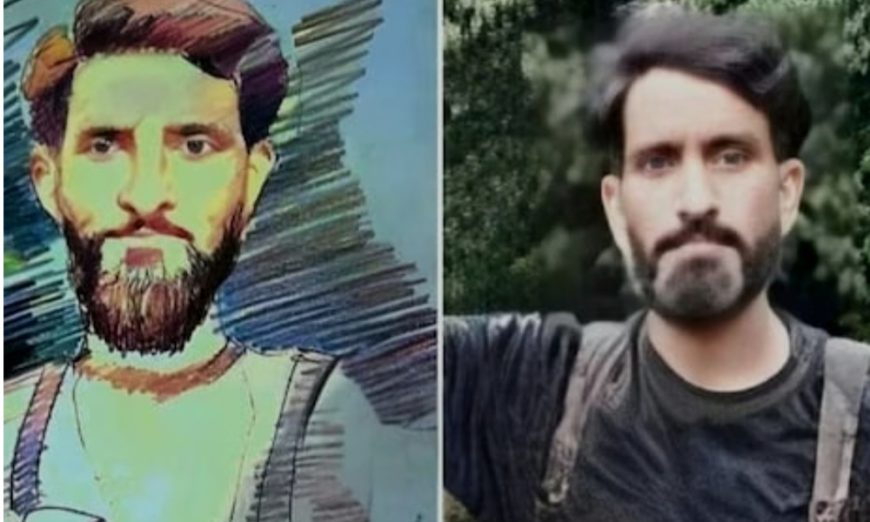Suleiman Shah alias Hashim Musa, a former Pakistani special forces soldier and top Lashkar-e-Taiba commander behind the brutal Pahalgam tourist killings, was eliminated during Operation Mahadev while napping in his Dachigam hideout.
The man who singled out Hindu men and shot them at point-blank range in front of their crying wives and children while they were holidaying in Pahalgam was killed while he was having a nap in his hideout on Monday. Suleiman Shah alias Hashim Musa, top Lashkar commander, was a key conspirator and executor of the barbaric attack in which 26 tourists were killed.
Musa was also involved in the killing of seven people involved in the construction of the Z-Morh tunnel on the Srinagar-Sonmarg highway last year.
He was among the three terrorists killed during Operation Mahadev in Jammu and Kashmir’s Dachigam area near Mount Mahadev. The operation was led by a joint team of the Army and J&K Police. Around 17 grenades, one M4 carbine and two AK-47 rifles were recovered from the hideout of the terrorists.
Musa, a former soldier in the Pakistani army’s special forces, is believed to have received elite para-commando training in Pakistan, which effectively aided his terrorist activities in Jammu and Kashmir, according to sources in the security establishment.
Musa, believed to be in his late 20s, infiltrated Indian territory through the Kathua and Samba sectors. After infiltration, he became active in the Dera Ki Gali area of Rajouri-Poonch, where his Lashkar-e-Taiba (LeT) module is suspected of orchestrating numerous attacks on security forces over the past year.
Pakistani para-commandos, particularly those trained by the Special Services Group (SSG), are renowned for their expertise in unconventional warfare, survival tactics, and mountain combat.
Their training includes high-endurance operations, close-quarters battle (CQB), navigation through difficult terrain, and advanced evasion techniques, all of which appear to be reflected in Musa’s operations.
Another violent episode under his command occurred in Baramulla, resulting in the deaths of four security personnel. Authorities had labelled Shah a “high-value” target and announced a reward of ₹20 lakh for information leading to his capture or death. His elimination during “Operation Mahadev”—a joint effort by the Indian Army, CRPF, and Jammu and Kashmir Police—is therefore considered a watershed moment.
The encounter yielded substantial intelligence and weaponry, with security forces recovering multiple firearms, rifle grenades, and advanced Chinese encrypted radios used for clandestine communication—tools indicative of a larger, ongoing terror plot.
Operation Mahadev was prompted by real-time intelligence inputs, including the interception of active Chinese-made radio transmissions employed by LeT for encrypted messaging. Intense surveillance and combing operations in the Mulnar area of Harwan led to Shah’s location and subsequent death. All neutralised militants in the operation were foreign nationals and considered key assets for cross-border terror organisations.
Following the Pahalgam massacre, India executed a targeted retaliatory campaign—Operation Sindoor—on the night of May 6-7, 2025. This precision strike at 1 am targeted nine terror infrastructure sites in Pakistan and Pakistan-Occupied Kashmir (PoK).
These locations, including the notorious LeT headquarters in Muridke and Jaish-e-Mohammed’s stronghold in Bahalwapur, were strategic operational hubs long associated with orchestrating attacks against India.
The operation’s codename, ‘Sindoor,’ paid homage to the women widowed by the Pahalgam tragedy, reinforcing its symbolic and tactical significance. India’s strike aimed to dismantle logistics, operational, and training infrastructure vital to LeT, Jaish-e-Mohammed, Hizbul Mujahideen, and affiliated networks—disrupting not only their capacity for near-term action but also their foundational ability to conduct future operations.
The death of Hashim Musa alias Suleiman Shah stands as a validation of intensive intelligence-driven implementation by Indian security agencies. This coordinated approach—combining physical tracking, technological surveillance, and strategic retaliation—illustrates the evolving sophistication of counter-terror operations in Kashmir and reaffirms India’s commitment to combating cross-border militancy.

